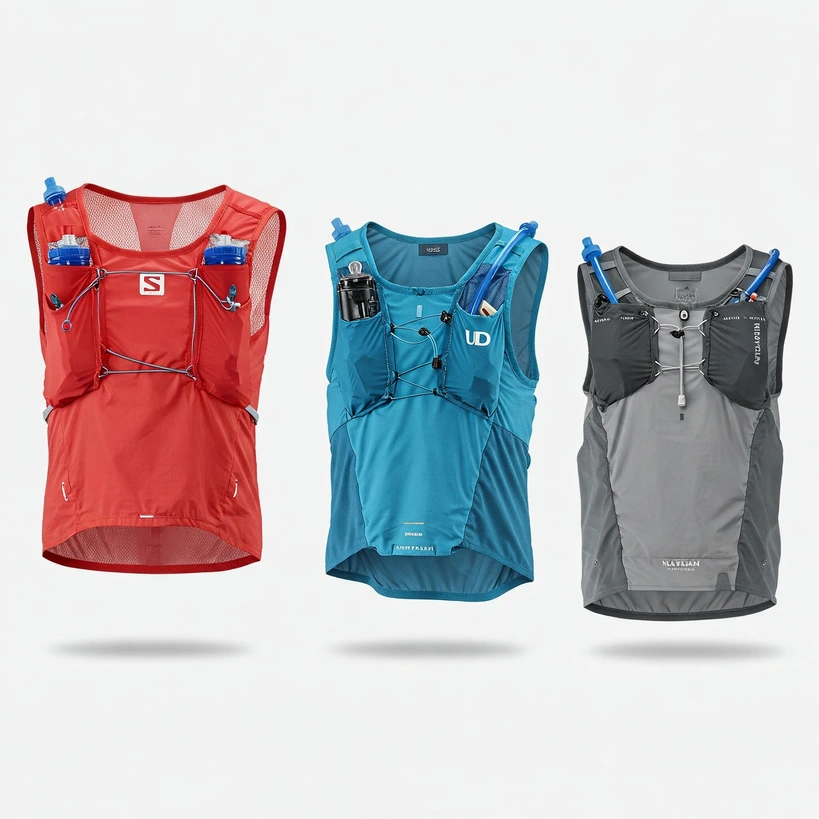💧 Best Hydration Packs for Ultra Running (2025) – Quick Comparison
Staying hydrated is non-negotiable for ultra runners, and your hydration pack is your most critical piece of gear. Choose the wrong pack, and even the best-planned race or training run can fall apart. But get it right, and it becomes a part of you—effortlessly carrying water, nutrition, and essentials as you conquer every mile, from sunrise to sunset. Discover the best hydration packs for ultra running and make every step count. 🚀💧
💧 Best Hydration Packs for Ultra Running (2025) – Quick Comparison
| Model | Capacity | Weight | Best For | Price Range |
|---|---|---|---|---|
| 🏆 Salomon ADV Skin 12 | 12L | 278g | Versatile Ultra Runs | 💰💰💰 |
| 🏃♂️ Ultimate Direction Ultra Vest 6.0 | 10.3L | 184g | All-Day Comfort | 💰💰 |
| 🌟 Nathan Pinnacle 12L | 12L | 184g | Lightweight Accessibility | 💰💰💰 |
| ⛰️ Black Diamond Distance 15 | 15L | 363g | Mountain Adventures | 💰💰💰💰 |
🗣️ User Reviews and Real-World Experiences
🗣️ User Reviews and Real-World Experiences
🏆 Salomon ADV Skin 12
“This pack is my go-to for all-day adventures. The fit is unmatched, and I can access everything on the go!”
– Emily, Ultra Runner
🏃♂️ Ultimate Direction Ultra Vest 6.0
“Super comfortable and breathable, perfect for long races. But the side pockets can be tricky to reach.”
– Mark, Trail Runner
🌟 Nathan Pinnacle 12L
“The lightest and most breathable pack I’ve ever used. Perfect for hot conditions, but be careful with durability.”
– Sarah, Mountain Runner
⛰️ Black Diamond Distance 15
“Fantastic for self-supported ultras. Plenty of space for gear, but a bit heavy when fully loaded.”
– Alex, Adventure Runner
💧 Bladder vs. Soft Flask: Which is Right for You?
💧 Hydration Bladders (Reservoirs)
- ✅ Large Capacity (1.5L – 3L+), perfect for long runs.
- ✅ Hands-free drinking with hose system.
- ✅ Distributes weight on your back.
- ❌ Hard to monitor remaining fluid.
- ❌ Refilling can be time-consuming.
- ❌ Requires thorough cleaning (especially the tube).
🌟 Soft Flasks
- ✅ Quick refills at aid stations.
- ✅ Easy to monitor remaining fluid.
- ✅ Can carry different drinks (water, electrolytes).
- ✅ Collapsible, no sloshing sound.
- ❌ Smaller capacity (usually 500ml each).
- ❌ Can create pressure points on chest.
- ❌ Requires front pocket space.
🚀 Our Recommendation: If your race has frequent aid stations, opt for Soft Flasks. If you need maximum water capacity for long, unsupported adventures, a Hydration Bladder is your best choice.
🏆 Best Hydration Packs for Ultra Running (2025) – Detailed Reviews
🏆 Best Hydration Packs for Ultra Running (2025) – In-Depth Reviews
🏆 Salomon ADV Skin 12
Capacity: 12L | Weight: 278g
Best For: Versatile Ultra Runs
Renowned for its adaptive “second skin” fit, the ADV Skin 12 offers unmatched comfort and versatile storage options. It’s perfect for runners who need all-day performance with minimal bounce.
✅ Pros: Exceptional fit, versatile storage, lightweight.
❌ Cons: Can trap heat on the back, premium price.
🏃♂️ Ultimate Direction Ultra Vest 6.0
Capacity: 10.3L | Weight: 184g
Best For: All-Day Comfort
This lightweight, breathable vest offers excellent storage organization and comfortable fit. Ideal for long-distance runners seeking durability and ease of access.
✅ Pros: Durable, breathable, comfortable fit.
❌ Cons: Rear side pockets are hard to access.
🌟 Nathan Pinnacle 12L
Capacity: 12L | Weight: 184g
Best For: Lightweight Accessibility
Designed for runners who value lightweight comfort, the Pinnacle 12L is breathable and offers incredible on-the-go pocket access.
✅ Pros: Ultra-light, excellent pocket accessibility.
❌ Cons: Limited durability in rough conditions.
⛰️ Black Diamond Distance 15
Capacity: 15L | Weight: 363g
Best For: Mountain Adventures
Built for rugged trails and multi-day adventures, the Distance 15 offers massive capacity and durable construction, perfect for self-supported runs.
✅ Pros: High capacity, durable, comfortable with heavy loads.
❌ Cons: Heavier than most, premium price.
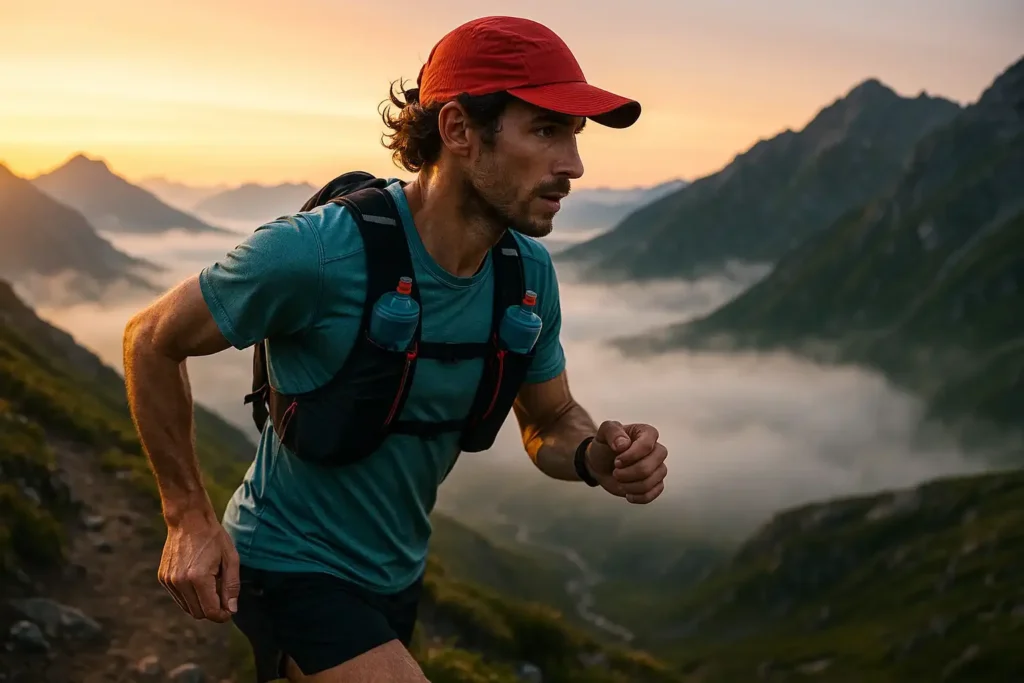
✅ 🌟 The Ultimate Guide to the Best Hydration Packs for Ultra Running (2025)
When you’re pushing past the marathon distance, often for six, twelve, even twenty-four hours or more, self-sufficiency isn’t just nice to have; it’s paramount. We venture into remote terrain, face unpredictable weather, and often cover significant ground between aid stations. In this world, your hydration pack transforms from a simple water carrier into your mobile command center, your lifeline. It holds the fuel, the layers, the navigation tools, the headlamps, the first-aid kit – everything you need to stay safe, comfortable, and performing at your best.
We’ve all been there, or seen it happen: a poorly fitting pack bouncing with every step, leading to raw, race-ending chafe. Or fumbling desperately for a gel tucked away in some inaccessible pocket, losing precious time and rhythm. Gear failure, especially with hydration or carrying systems, can cost you minutes, hours, or even force a DNF. That’s why choosing the right pack isn’t a trivial decision; it directly impacts your comfort, efficiency, and ultimately, your ability to conquer the miles.
This guide dives deep into the world of ultra running hydration packs. We’ll dissect the essential features, explore the pros and cons of different designs based on countless hours of testing and real-world feedback from runners like you, review the top contenders for 2025, and help you navigate the choices to find the pack that will become your trusted companion on the trail.
✅ 🌟 Decoding the Ideal Ultra Running Hydration Pack: Key Features & Considerations
Selecting the right pack isn’t just about grabbing the one with the coolest colors. It requires understanding the specific features that address the unique challenges of our sport.
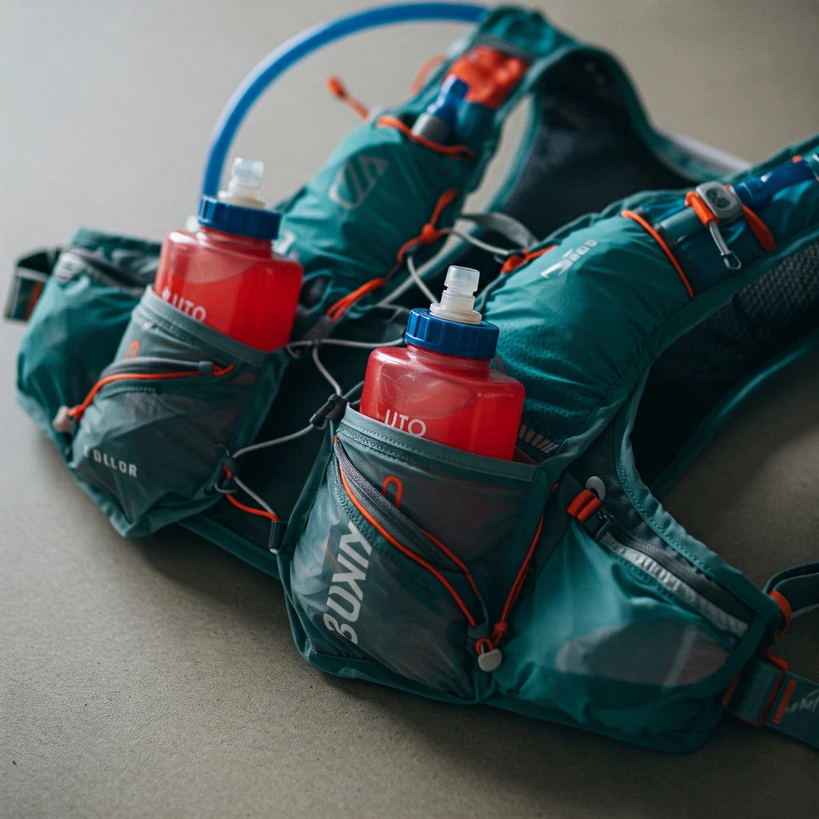
✅ 🌟 Hydration Strategy: Bladders vs. Soft Flasks – Which Is Best?
How you carry your fluids is a cornerstone of your race strategy. The two main contenders are bladders (reservoirs) tucked in the back and soft flasks riding upfront. There’s no single “best” answer; it depends on the race, aid station frequency, weather, personal preference, and what you plan to drink.
- Hydration Bladders (Reservoirs): The High-Volume Haulers
- The Upside: They offer the largest capacity (typically 1.5L to 3L+), letting you carry significant water for long stretches between aid or unsupported adventures. The weight sits distributed across your back, and the hose allows convenient, hands-free sipping without breaking stride. In the cold, body heat offers some freeze protection; in the heat, a cold bladder can feel nice initially. Using a bladder also frees up valuable front pocket real estate.
- The Downside: It’s notoriously hard to know exactly how much fluid is left – increasing the risk of running dry or over-hydrating. Refilling at aid stations is slower and more cumbersome, often requiring pack removal. Cleaning, especially the tube and bite valve, demands diligence to prevent gunk buildup. Water in the tube can get unpleasantly warm in summer or freeze in winter if you don’t sip often. They’re generally best for water only, as electrolyte mixes complicate cleaning. While rare, leaks can happen.
- Best For: Runners prioritizing maximum water capacity for long, self-sufficient stretches where aid station speed is less critical.
- Soft Flasks: The Versatile Sprinters
- The Upside: You can see your fluid levels at a glance. Refilling at aid stations is much faster and simpler. They allow you to carry different drinks simultaneously (water in one, electrolytes/calories in another), supporting complex fueling strategies. As you drink, they collapse, reducing bulk and eliminating annoying sloshing. They are generally lightweight and many are compatible with water filters for refills from natural sources.
- The Downside: Individual volume is smaller (usually 500ml), so carrying lots of water means multiple flasks, occupying front pocket space. Reinserting full or partially full flasks into snug pockets can sometimes be awkward while moving. Some runners experience pressure points on their chest or ribs, especially over very long distances. Cleaning narrow-mouthed flasks can still be tricky.
- Best For: Races with reasonably frequent aid stations, allowing quick refills and carrying less weight between stops. Ideal for runners needing different drink options or precise fluid monitoring.
- The Bottom Line: Choosing between bladders and flasks is a strategic decision. Need max volume and self-sufficiency? A bladder might be your answer. Prioritizing aid station speed and fluid variety? Flasks often win out. Many runners use a combination, adapting to the specific demands of the race.

✅ 🌟 Fit is King: Achieving Comfort, Stability, and Chafe Prevention
If there’s one non-negotiable, it’s this: your pack must fit securely and comfortably, without bouncing or chafing. An ill-fitting pack will make an ultra miserable, guaranteed.
- Vest vs. Backpack Designs: For performance running, hydration vests have rightly taken over. They sit higher, wrap the torso snugly, and use harness-style straps to minimize bounce dramatically compared to traditional backpacks. Vests are designed for on-the-go access to front pockets, crucial for efficient fueling. Backpacks might offer more volume but are generally better suited for fastpacking where carrying overnight gear balances pure running efficiency.
- The Non-Negotiable Snug, Bounce-Free Fit: The goal is for the vest to feel like part of your clothing, not a piece of luggage bouncing around. Any significant movement equals friction, and over hours, friction equals painful chafing.
- Sizing and Adjustability: Start by carefully measuring your chest/rib cage circumference and consulting the manufacturer’s sizing chart – fit varies between brands and models. Beyond initial size, adjustability is key. Look for dual sternum straps (often elasticated or bungee-style like Salomon’s Quicklink) to distribute pressure and fine-tune the fit across the chest. Side or underarm adjustment systems (like Ultimate Direction’s Comfort Cinch) are crucial for dialing in the fit around the lower torso. You need to be able to adjust on the fly as you drink fluids, eat food, and add or remove layers. Many brands offer excellent women-specific fits, accommodating bust shape and often featuring narrower shoulders or shorter torso lengths for improved comfort. Whenever possible, try on vests before buying, ideally loaded with some weight.
- Materials Matter: Soft, breathable mesh against the skin helps with ventilation and moisture management. Look for soft edging or binding around seams and armholes to minimize friction points. Stretch fabrics (like Salomon’s Sensifit) allow the vest to conform closely and move with you, adapting to breathing and movement.
✅ 🌟Storage Smarts: Capacity, Organization, and Accessibility
Your vest is your mobile aid station. Effective storage means enough capacity, logical organization, and, crucially, easy access while moving.
- How Much Capacity? Ultra needs typically range from around 5-6 liters for shorter or well-supported races up to 12-15 liters or more for mountain ultras with extensive mandatory gear lists (waterproofs, emergency blanket, headlamps, first aid, phone, etc.) and substantial fuel needs. Consider the requirements of your target races. Some stretchy vests can hold more than their nominal rating suggests.
- Pocket Layout: A good vest offers a variety of pockets. Dedicated front flask pockets (often with securing loops), adjacent front stash pockets for gels/bars/gloves, zippered pockets for valuables (phone, keys, ID – sometimes water-resistant), and larger rear compartments for layers, bladder, or bulkier kit are standard. Lower back “kangaroo” or pass-through pockets, accessible without removing the pack, are increasingly popular for stashing jackets or poles.
- On-the-Go Accessibility: This is huge. You need to grab hydration, nutrition, phone, gloves, etc., without stopping. The placement, size, and closure type of front and side pockets dictate how easily you can do this. Every time you stop or slow significantly to access something, you lose time and momentum. Vests that let you manage most needs while running offer a real advantage.
✅ 🌟 Pole Carry Systems: Securely Stowing Your Running Poles
Trekking poles are invaluable on hilly courses. An effective pole carrying system is essential if you use them. Common options include vertical storage (front/back), horizontal (low back/shoulders), or diagonal (sometimes via a separate quiver like Salomon’s). Key factors are ease of stowing/deploying while moving, security (no bouncing!), and non-interference with other pockets. Some systems are brilliant; others are awkward afterthoughts.
Key Performance Factors: Weight, Durability, and Breathability
Beyond fit and storage, the vest’s inherent properties matter over the long haul.
- Weight: Lighter is generally better, reducing fatigue. Top 10-12L vests typically weigh 6-10oz (170-290g) empty. However, chasing ultralight status can sometimes compromise durability.
- Durability: Vests take a beating – friction, snags, stressed seams, corrosive sweat. Robust construction using quality materials (ripstop nylons, strong mesh), reinforced stress points, and reliable hardware (like YKK zippers) is crucial for race-day reliability.
- Breathability: Managing heat and moisture is vital, especially in warm conditions. Open mesh panels, moisture-wicking fabrics, and designs minimizing large contact areas promote airflow. There’s often a trade-off: more durable or structured materials can trap more heat, leading to the dreaded “swampy back.” Consider your typical running climate.
- The Trade-offs: Understand that manufacturers constantly balance these three factors. Ultralight might mean less durable. Max durability might mean heavier and less breathable. Max airflow might use mesh prone to snagging. Prioritize based on your needs – hot weather runners might favor breathability, while rugged mountain adventurers might prioritize durability.

✅ 🌟 Top Hydration Pack Contenders for Ultra Runners (2025 Reviews)
Based on expert reviews, runner feedback, and performance testing, several vests consistently rise to the top. Here’s a look at the leading contenders:
Salomon ADV Skin 12: The Versatile Benchmark
Often considered the gold standard, the ADV Skin 12 is renowned for its comfortable, adaptive “second skin” fit and versatile storage, making it suitable for a wide range of ultra distances.
- Key Specs: 12L capacity, ~9.0-10.3oz/278-293g (size M), includes 2x 500ml soft flasks, bladder compatible (1.5L), multiple pole carry options.
- The Lowdown: The Sensifit construction and Quicklink sternum closure provide an exceptional, bounce-free fit that moves with you. Storage is ample and well-organized with good front/side access. It’s generally durable.
- Potential Issues: Reinserting flasks can be fiddly. The back panel can trap heat/sweat in warm weather. Premium price point. Some users find recent pocket layout changes less intuitive.
- Pros: Exceptional fit, high comfort, versatile storage, good organization, quality included flasks, multiple pole carry options, good durability.
- Cons: Back panel breathability, tricky flask re-insertion, flasks lack locks, premium price.

Ultimate Direction Ultra Vest 6.0 / Vesta 6.0: The Dependable Workhorse
Designed specifically for ultras, the UD Ultra Vest (unisex/men’s) and Vesta (women’s) emphasize comfort, durability, and efficient storage for the long haul. Often wins “Best Overall” awards.
- Key Specs: 10.3L capacity, ~6.5oz/184g (size M, empty), includes 2x 500ml UD Body Bottles, bladder compatible (2.0L), versatile pole carry.
- The Lowdown: Features the Comfort Cinch system for side/back adjustment. Materials are soft, breathable, and durable, with good moisture management. Offers excellent storage organization, including useful water-resistant pockets.
- Potential Issues: Sizing can run large; getting the right size is crucial to prevent bounce. Adjusting the Comfort Cinch on the move can be difficult. Accessing the rear zippered side pockets while wearing is awkward for most. Flasks can slouch when partially empty.
- Pros: Durable construction, excellent storage organization, high capacity, comfortable/breathable materials, water-resistant pockets, versatile pole carry, good value.
- Cons: Sizing may run large, awkward rear side pocket access, tricky on-the-go cinch adjustment, flasks can slouch.
Nathan Pinnacle 12L: The Accessibility & Lightweight Specialist
Focusing on lightweight comfort, breathability, and exceptional on-the-go access, the Pinnacle aims for a “second-skin” feel with incredibly soft materials.
- Key Specs: 12L capacity, ~6.5-7.5oz/184-212g (size M, empty), includes 1.6L insulated bladder, front pockets fit flasks (sold separately), vertical pole carry pocket.
- The Lowdown: Standout pocket accessibility – numerous well-placed pockets, including innovative rear kangaroo pockets reachable from the sides. Very lightweight and breathable materials feel great against the skin. Included insulated bladder is a nice touch for warm weather.
- Potential Issues: Premium price. Focus on ultralight materials raises long-term durability concerns for some users. Limited side adjustability means initial sizing is critical; some find it harder to get a perfectly secure fit compared to Salomon if sizing isn’t spot on. Pole carry is less versatile/secure than others.
- Pros: Exceptional pocket accessibility, very lightweight/breathable, soft/comfortable materials, bounce-free fit (when sized right), includes insulated bladder, good organization.
- Cons: Premium price, potential durability concerns, limited fit adjustability, pole carry less secure, water-resistant pockets aren’t fully waterproof.
Black Diamond Distance 15: The Max Capacity Hauler
Bridging the gap between vest and fastpack, the Distance 15 offers a substantial 15L capacity for technical mountain running, self-supported efforts, or races with huge mandatory gear lists.
- Key Specs: 15L capacity, ~12.8oz/363g (size M, empty), NO included hydration, fits flasks + 2L bladder, integrated Z-Pole quiver sleeves.
- The Lowdown: Built tough for rugged environments. Harness system is designed to carry heavier loads comfortably. Excellent integrated pole carry system. Offers massive storage volume.
- Potential Issues: Heavier than typical race vests. Hydration must be purchased separately. Can feel bulky when minimally loaded. Premium price. Likely overkill for shorter or well-supported ultras.
- Pros: High capacity, durable construction, comfortable with heavy loads, excellent integrated pole carry, versatile for running/fastpacking.
- Cons: Heavier, hydration not included, can feel bulky when under-loaded, premium price.
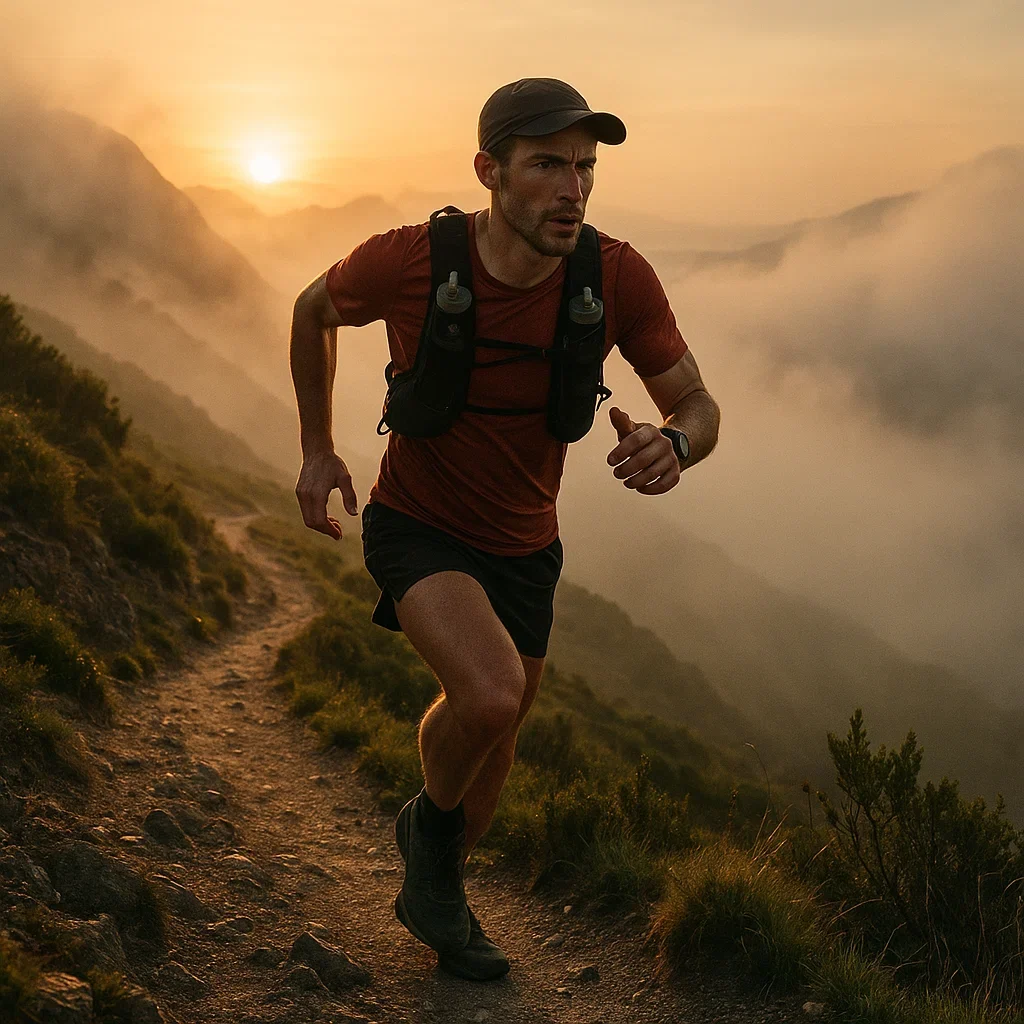
Notable Mentions / Budget-Friendly Options:
For those looking for solid performance without the top-tier price tag, options like the Salomon Active Skin series or the UltrAspire Spry 4.0 offer great value and reliable function.
Head-to-Head: Comparing the Leading Ultra Running Vests
Choosing between the top contenders often comes down to personal priorities:
- Fit & Comfort: Salomon often wins for its adaptive, bounce-free fit, but can run warm on the back. UD is comfortable and secure if sized correctly, but adjustment is less intuitive. Nathan is super soft and light but relies heavily on correct initial sizing due to less adjustability. Fit is personal – try them on!
- Storage & Accessibility: Nathan is the clear winner for on-the-go access with its clever pocket design. Salomon offers good access and organization, but rear pockets take more effort. UD has secure storage (love the water-resistant pockets) but frustratingly difficult-to-access rear side zips.
- Hydration: Salomon includes quality flasks (though fiddly to re-holster). UD includes standard Body Bottles. Nathan uniquely includes an insulated bladder (great for heat, requires flask purchase if preferred). Compatibility is key – many runners mix-and-match flasks/bladders.
- Durability & Breathability: UD often feels the most robust. Salomon is generally durable. Nathan’s ultralight focus makes it super breathable but raises the most durability questions. Salomon’s back panel is the least breathable of the top three.
- Value: Nathan and Salomon command premium prices. UD often provides excellent bang for your buck considering its features and durability. Remember to factor in the cost if hydration isn’t included (like with BD).
- The ‘Ecosystem’: Consider compatibility. If you love Salomon’s Custom Quiver for poles, the ADV Skin is a natural fit. Check if your favorite flasks/bladder work well with the vest you’re considering.
✅ 🌟 How to Choose Your Ultimate Ultra Running Hydration Pack
Alright, decision time. How do you pick the best hydration pack for your ultra running?
- Prioritize Fit & Comfort Above All: This cannot be overstated. It must fit snugly without restricting breathing, and it must not chafe over many hours. Try vests on, weighted if possible. Pay attention to adjustability.
- Match Capacity to Your Needs: Be realistic about gear (mandatory lists!) and fluid requirements for your typical races/runs. Ensure enough volume without unnecessary bulk.
- Align Hydration System with Strategy: Bladder for max volume/unsupported? Flasks for speed and variety? Combination? Choose what suits your race style and preferences.
- Evaluate Accessibility: How easily can you grab fuel and gear while moving? Vests with better on-the-go access save time and frustration.
- Consider Your Profile:
- The All-Rounder (Adaptable Fit & Proven Performance): Salomon ADV Skin 12
- The Organizer (Max Accessibility & Lightweight Comfort): Nathan Pinnacle 12L
- The Dependable Workhorse (Durability & Secure Storage): Ultimate Direction Ultra Vest 6.0
- The Max Capacity Hauler (Unsupported & Technical): Black Diamond Distance 15
- Test, Test, Test: Once you choose, train with it extensively. Load it as you would for race day. Dial in the fit, figure out where every piece of gear goes, and practice accessing everything while running. Nail down your hydration and nutrition strategy using the pack.
✅ 🌟 Conclusion: Gear Up and Conquer the Distance
Your hydration vest is far more than just a piece of equipment; it’s your partner on those long, challenging journeys. Choosing the right one requires understanding your own needs, the demands of your races, and the specific strengths and weaknesses of the available options. While this guide provides insights based on extensive testing and feedback, personal experience is paramount. Trust what feels right on your body. Test it thoroughly. Dial it in. Then, go out and conquer the distance, knowing your critical gear has your back (literally!).
Happy trails, and may your pack always feel light!
Putting together a comprehensive guide like this relies heavily on the hard work and shared experiences of countless others in the ultra running community. A massive thank you goes out to the dedicated gear reviewers at publications like iRunFar, Outdoor Gear Lab, and Treeline Review, the meticulous testers, and fellow runners on forums like Reddit who rigorously analyze, compare, and discuss this essential equipment. Their collective insights and real-world feedback, shared in the resources listed below, are invaluable in helping all of us navigate the complex world of gear selection and find the kit that truly works for those long miles on the trail.
❓ Frequently Asked Questions
💡 What is the best hydration pack for ultra running?
The best hydration pack depends on your needs. For versatile performance, the Salomon ADV Skin 12 is a top choice. For lightweight comfort, consider the Nathan Pinnacle 12L.
📅 Should I use a hydration bladder or soft flasks?
If you need high water capacity for unsupported runs, a hydration bladder is best. If you prefer easy refills and different drink options, soft flasks are ideal.
🏃♂️ How do I choose the right capacity for a hydration pack?
For short ultras (30-50K), 5-10L is sufficient. For longer ultras (50K+), consider 12-15L to carry more gear and nutrition.
💧 How do I clean my hydration bladder or soft flasks?
Rinse with warm water and mild soap. Use a cleaning brush for the hose and dry completely to prevent mold.
🌧️ Are hydration packs waterproof?
Most hydration packs are water-resistant but not fully waterproof. For wet conditions, use a waterproof liner for your gear.
🌟 What is the lightest hydration pack for ultra running?
The Nathan Pinnacle 12L is one of the lightest options, perfect for hot and fast races.
🔧 Can I use electrolyte drinks in my hydration bladder?
Yes, but it requires thorough cleaning after use to prevent mold and odors.
📌 How do I prevent chafing with hydration packs?
Ensure a snug fit, use anti-chafe balm on contact points, and consider breathable materials.
⚡ What should I pack in my hydration vest for an ultra?
Water, electrolyte drinks, energy gels, a small first-aid kit, phone, ID, and weather-appropriate gear.
🚀 How do I adjust my hydration vest for a perfect fit?
Use the sternum straps and side adjustments to ensure a snug, bounce-free fit.
📚 Further Reading
🏃♂️ Best Running Vests for 2025
Explore the latest and greatest running vests for every distance.
Read More ➡️🌧️ How to Train for an Ultra Marathon
A complete guide on building endurance, speed, and mental strength.
Read More ➡️🧠 Mental Toughness for Ultra Runners
Master your mindset and conquer any ultra challenge.
Read More ➡️🌐 External Resources:
✅ 50K Ultra Marathon Hydration Quiz
Test your knowledge on hydration packs, hydration strategies, and more! 🚀
1. What is the main advantage of a hydration bladder?
Show Answer
Large water capacity (1.5L – 3L) and hands-free drinking.
2. What is the best hydration pack capacity for a 50K race?
Show Answer
5-12L, depending on race conditions and aid stations.
3. How often should you clean your hydration bladder?
Show Answer
After every use, especially if using electrolyte drinks.
4. What is the best way to prevent chafing with a hydration vest?
Show Answer
Ensure a snug fit, use anti-chafe balm, and choose breathable materials.
5. Can you mix water and electrolyte drinks in a hydration bladder?
Show Answer
Yes, but clean the bladder thoroughly after use to prevent mold.
6. What is the key difference between a hydration bladder and soft flasks?
Show Answer
Bladders have higher capacity but require a hose for drinking, while soft flasks are more versatile but have lower capacity.
7. How do you know if your hydration pack fits properly?
Show Answer
The pack should be snug without bouncing, and you should easily access the pockets.
8. What is the best way to store your hydration pack when not in use?
Show Answer
Clean and dry it thoroughly, and store it in a cool, dry place.
9. Which hydration pack is best for hot weather races?
Show Answer
A lightweight vest with breathable mesh, like the Nathan Pinnacle 12L.
10. What is the most common hydration mistake in ultra running?
Show Answer
Not drinking enough or overhydrating without electrolytes.
🚀 Share This Guide!
Did you find this guide helpful? Share it with your friends on social media!
🌟 Final Thoughts
Congratulations on making it through our complete guide to the best hydration packs for ultra running in 2025! Whether you’re a seasoned ultra runner or just getting started, staying properly hydrated is key to your success. 💪
Remember, the best hydration pack is the one that suits your needs and comfort. Prioritize fit, accessibility, and capacity based on your race type and personal preference.
We hope this guide has helped you choose the perfect hydration pack. Feel free to explore our other guides for more ultra running tips and gear recommendations.
Got any questions or want to share your experience? Drop a comment below! Happy running! 🌄
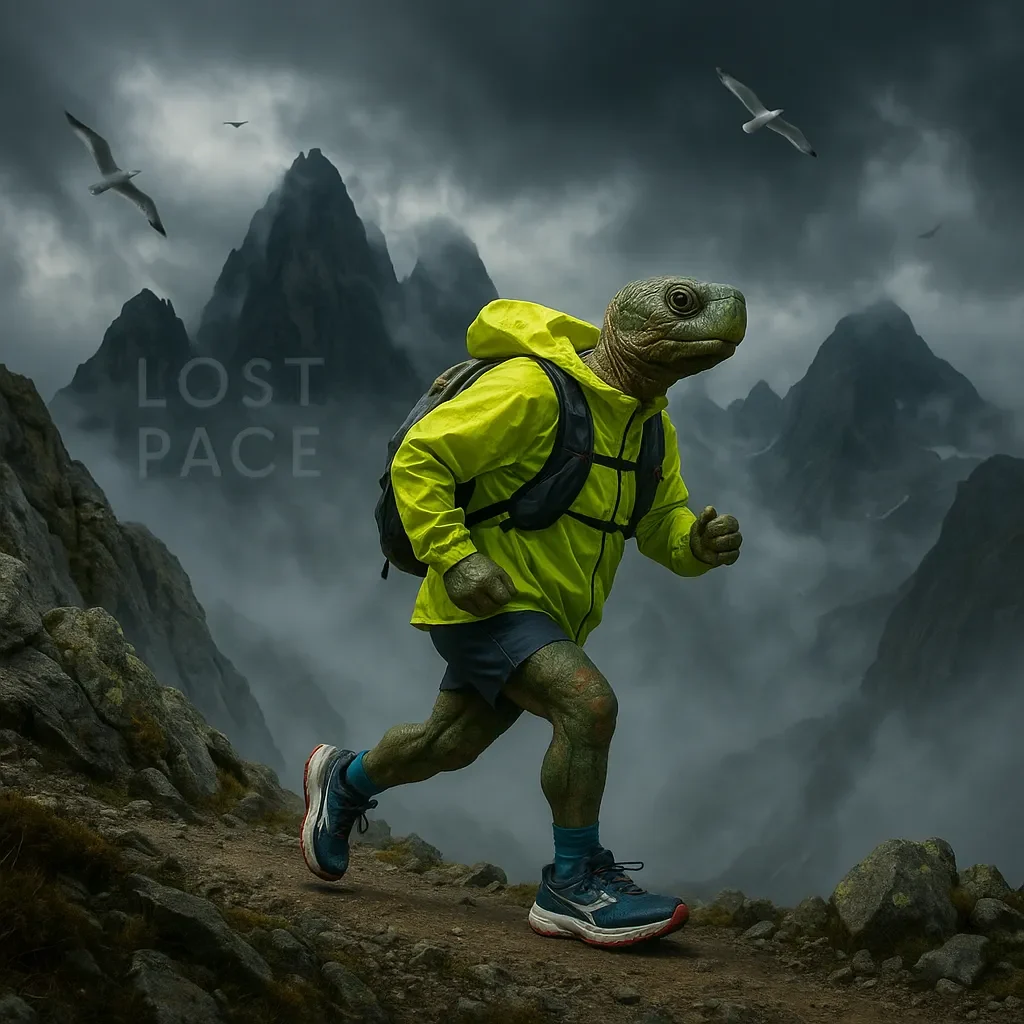
About the Author
Lost Pace is an ultramarathon runner, shoe-tester and the founder of umit.net. Based year-round in Türkiye’s rugged Kaçkar Mountains, he has logged 10,000 + km of technical trail running and completed multiple 50 K–100 K ultras.
Blending mountain grit with data, Lost analyses power (CP 300 W), HRV and nutrition to craft evidence-backed training plans. He has co-written 260 + long-form guides on footwear science, recovery and endurance nutrition, and is a regular beta-tester of AI-driven coaching tools.
When he isn’t chasing PRs or testing midsoles, you’ll find him sharing peer-reviewed research in plain English to help runners train smarter, stay healthier and finish stronger.
Ultrarunner · Data geek · Vegan athlete

